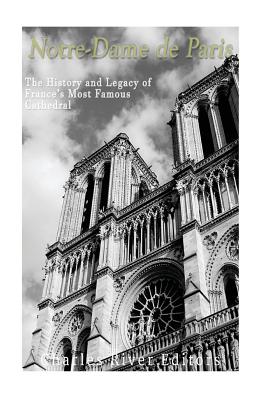Description
*Includes pictures
*Includes historic descriptions of the cathedral
*Includes online resources and a bibliography for further reading
“Notre Dame de Paris, in particular, is a curious specimen of this variety. Every surface, every stone of this venerable pile, is a page of the history not only of the country, but of science and of art. Thus—to mention here only a few of the chief details—whereas the small Porte Rouge almost touches the limits of fifteenth century Gothic delicacy, the pillars of the nave, by their massiveness and great girth, reach back to the Carlovingian Abbey of Saint-Germain-des-Prés. One would imagine that six centuries lay between that door and those pillars.” With these words, the famous 19th century novelist Victor Hugo attempted to introduce his readers to the backdrop of his seminal work, later known as The Hunchback of Notre Dame. This, it should be noted, was not the name that Hugo gave to his work; instead, he called it simply Notre Dame, after the building in which he set it.
This location was no accident, for, perhaps more than any other city in Europe, Paris has seen every kind of trouble and happiness that can befall a place. It may be called the “City of Lights,” but it also frequently saw its leaders’ blood spilled in the streets. It is the symbol of romance, but also a place where the famed Napoleon divorced the love of his life in order to have a son. It is famed for its art and culture, but it hosted Nazis during four long years of occupation. Most of all, it is a city of building up and tearing down and building up again, where life is ever-changing.
Yet, in the midst of this history of turmoil and chaos, one place has survived largely unchanged, a symbol to Christian believers of the unchanging truths of faith. Notre-Dame has stood as a monumental, though silent, witness to much of Paris’ history. As Hugo pointed out, “This generative Mother-Church is, among the other ancient churches of Paris, a sort of Chimera: she has the head of one, the limbs of another, the body of a third—something of all. These hybrid edifices are, we repeat, by no means the least interesting to the artist, the antiquary, and the historian…They let us realize to how great a degree architecture is a primitive matter, in that they demonstrate…that the greatest productions of architecture are not so much the work of individuals as of a community; are rather the offspring of a nation’s labour than the out-come of individual genius; the deposit of a whole people; the heaped-up treasure of centuries; the residuum left by the successive evaporations of human society; in a word, a species of formations. Each wave of time leaves its coating of alluvium, each race deposits its layer on the monuments, each individual contributes his stone to it.”
Notre-Dame de Paris: The History and Legacy of France’s Most Famous Cathedral chronicles the remarkable history of the Parisian cathedral. Along with pictures depicting important people, places, and events, you will learn about Notre-Dame like never before.
Language
Questions & Answers
Have a Question?
Be the first to ask a question about this.

